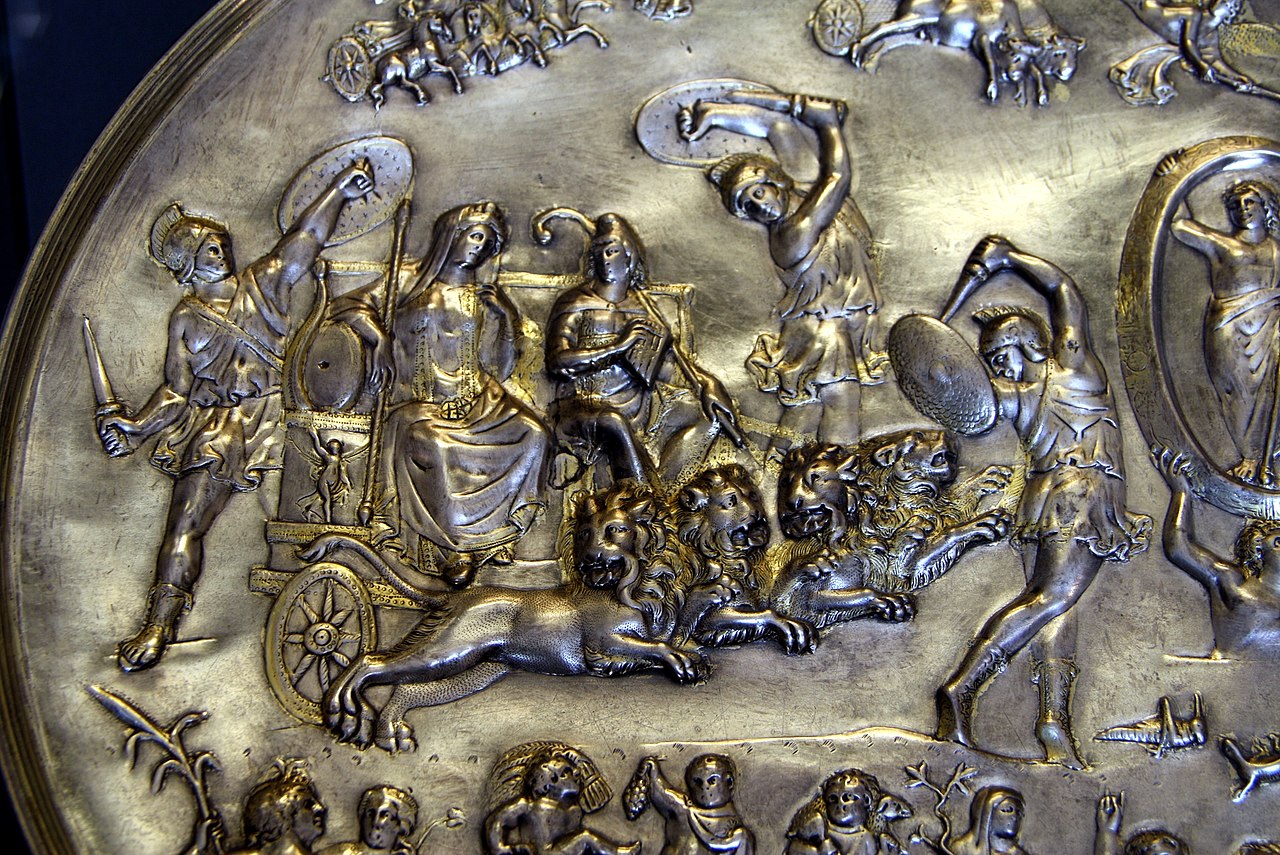Cybele
Cybele, the embodiment of motherhood and nature’s bounty, reigned supreme as the sole goddess worshipped in the ancient kingdom of Phrygia.

While Cybele originated in Anatolia as the sole goddess of Phrygia, her influence spread westward. In Rome, she was embraced as Magna Mater, the “Great Mother.” This adoption wasn’t a whim. During the Second Punic War, a pivotal moment in Roman history, the Sibylline Oracles, revered for their pronouncements, advised the Roman state to enlist Cybele as a powerful religious ally.
To further integrate her into the Roman pantheon, Roman mythographers reimagined Cybele as a Trojan goddess. This clever twist connected her to Aeneas, the legendary Trojan prince and supposed ancestor of the Roman people. Cybele’s transformation not only bolstered Roman morale during the war but also solidified her place in the Roman religious landscape.

As Rome’s power grew, so did the reach of Cybele’s cult. Romanized versions of her worship spread throughout the vast empire. However, the nature of her rituals and the practices of her priesthood sparked debate and controversy. These discussions, documented in both ancient Greek and Roman literature, continue to be a topic of exploration for modern scholars.
Under Emperor Augustus, Cybele, the Great Mother, became a powerful symbol of Roman imperial authority and religious dominance. This wasn’t accidental. Augustus, claiming Trojan ancestry through Julius Caesar and the blessing of Venus, cleverly linked Cybele, previously associated with Troy, to the legitimacy of his own rule.

This connection wasn’t merely symbolic. Augustus’ wife, Livia, was portrayed as the earthly embodiment of Magna Mater. Cameos and statues depicted the goddess with Livia’s features, solidifying her role as Rome’s protector and a symbol of maternal benevolence.
By this time, Rome had conquered Cybele’s original homelands in Greece and Phrygia. Ironically, the Romanized version of Cybele, now intertwined with the concept of imperial protection, was then introduced back to these conquered territories.

Art

Ostia Archaeological Museum.

Ostia Archaeological Museum.

Ostia Archaeological Museum.





Cologne Romano-Germanic Museum.

Cologne Romano-Germanic Museum.
